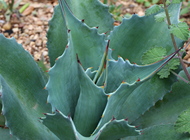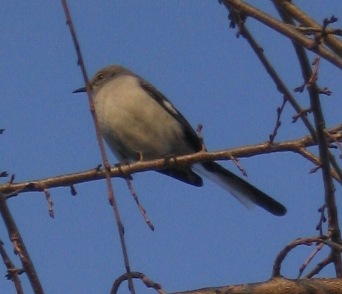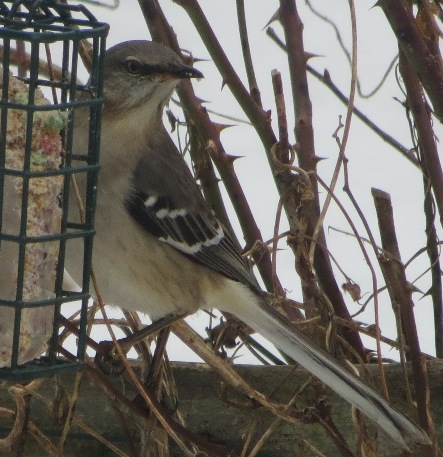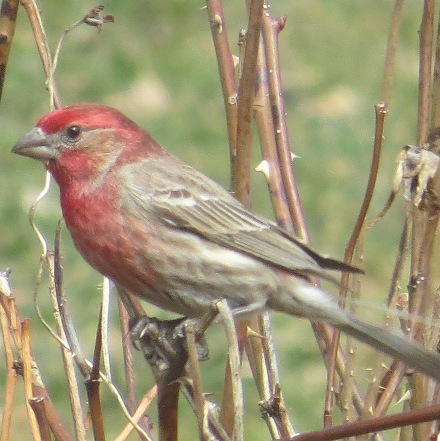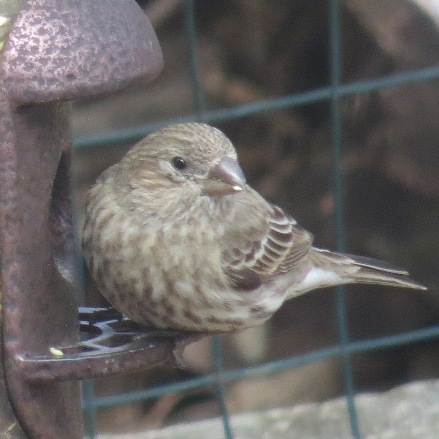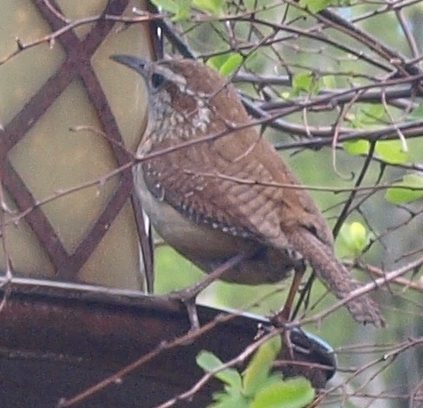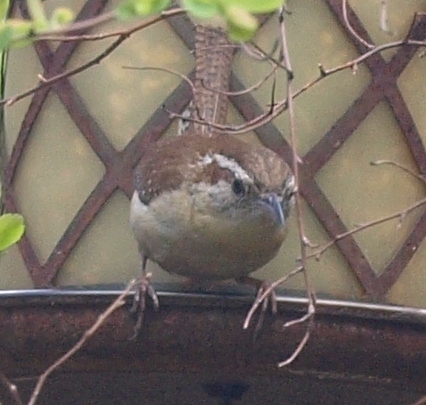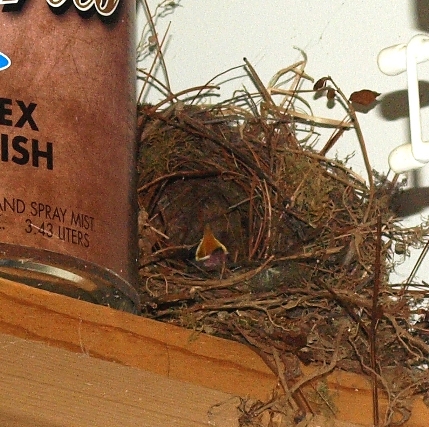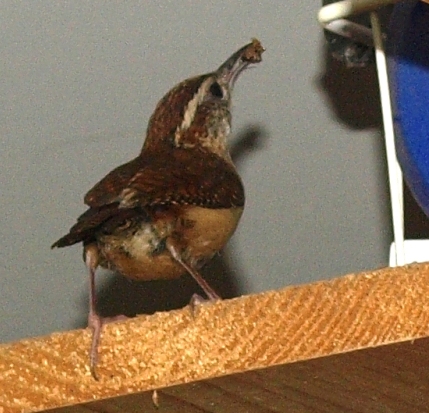They're so flightyWith as many pictures as I've managed to accumulate of all the insects, spiders, and other tiny occupants of our Lush Gardens, you'd think that I'd have paid equal attention to the avian contingent. Unfortunately, I've found capturing the diversity of bird life quite challenging. I seldom take the time to just sit, wait, and watch, and when I do see a bird whose photo would make for a nice addition to these pages, it's usually so skittish that it's gone by the time I bring my camera to the ready. So for years, the bird selection on these pages was rather limited – so much so that they were lumped in with the mammals and amphibians (who still have their own page). But now, at long last, I decided to dedicate a page to the chirpy, squawky, twittery set. I even set up a tripod to capture their antics at our patio feeder. For now, the selection is limited, but I hope that, guided by the brand new bird field book that Amy just gave me, I'll soon learn to recognize a larger variety of back-yard birds. I'll share my progress with you on this page. The photo quality isn't going to be anywhere near that of dedicated birdsters. That's OK – I'm just having some fun. Northern mockingbird
The photo at left was my first attempt at bird photography in the garden. This mockingbird probably thought it was safe enough, well out of reach, so it sat for a picture. It was in late winter, most likely scoping out a nesting location in our weeping cherry. They also occasionally visit our bird feeders, where they are a step larger than most of the little flitting things. White-breasted nuthatch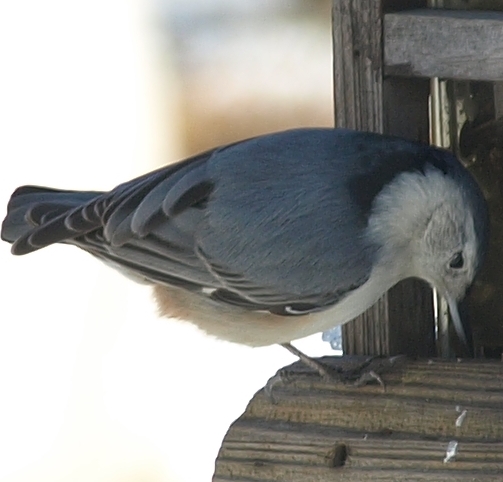
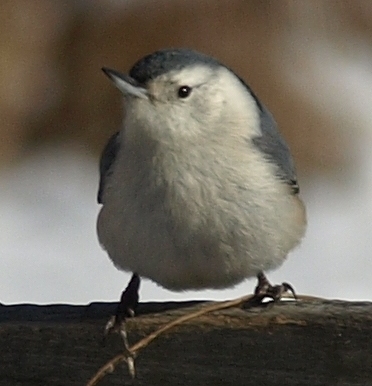
Frequent visitors to our bird feeders, these colorful birds are known for their climbing prowess, often taking an upside-down stance on trees and feeders. The photo at right shows the funky uptilted beak angle, just right for getting at seeds. Northern cardinal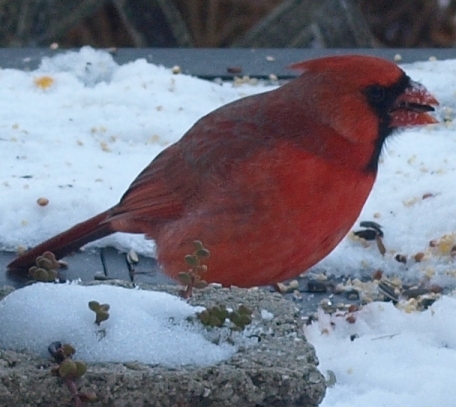
Definitely the dandy around our patio, especially when they crowd around our feeders in the winter. We usually seem to have one couple around (only one male and one female appear at our feeders at any one time, anyway). This one here had been pecking at some seeds left on our snowy table, which left his beak crystal-covered. Robin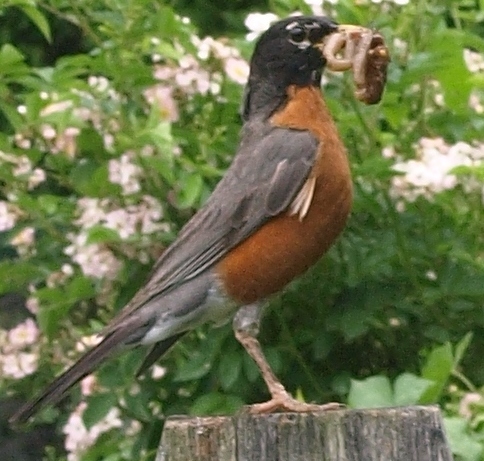
One of the few birds I can confidently identify, robins make quite a show of
themselves in spring. They stay away from me quite effectively, so taking their
picture is harder than I would have thought.
Robins are also the birds most likely to nest in our garden. We spotted this one in late May, about 7 ft up in an arborvitae. Juncos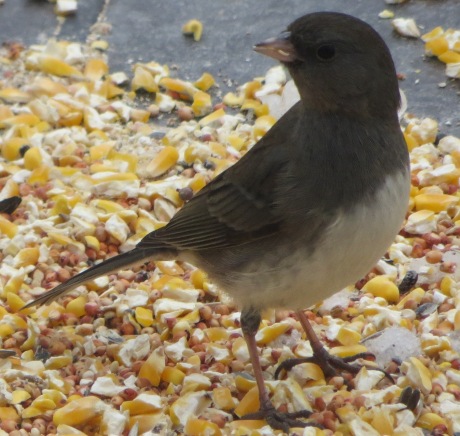

Dark-eyed juncos (Junco hyemalis) are American sparrows with gray-and-white coloring. They're quite prevalent around our winter feeders, and are among the least skittish birds. These stayed put on the near edge of our patio table (atop a small hypertufa trough) while I snapped their photo from a few feet away. The patio door glass separated us, but most birds are long gone before I even get that close, glass or no glass. Finches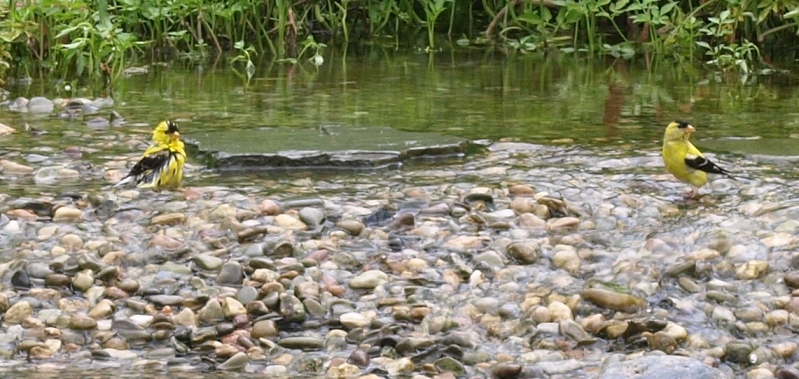
American goldfinches (Carduelis tristis) like to splash about in the
area where our bog filter fords over into the swimming pond. They never let me
get close enough for a good photo, but I liked this shot, where one of the
boy-birds hasn't quite readjusted his do after a good wash-up.
Apparently quite common, I don't recall seeing the red-marked male form (photo above left) of this house finch very often; the less conspicuous female looks superficially like several other "brown jobs", so she may have been around without me noticing much. This species was once restricted to the western half of the continent, but is now widespread across all of North America. Chickadees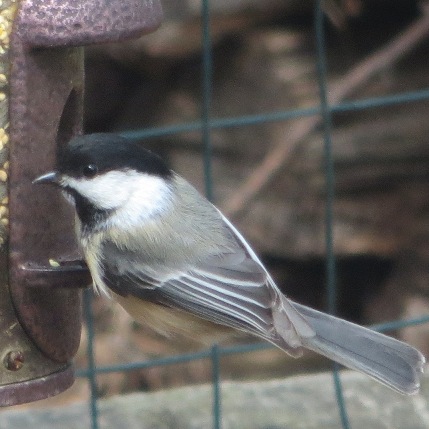
Cute little bird native to a broad swath of the northern US and Canada, where it lives year-round. We see it primarily during winter, when it makes occasional visits to our feeders. The closely related Carolina chickadee looks very similar, but its territory doesn't extend quite far enough north, although it does include a slice of southeastern Pennsylvania. Sparrows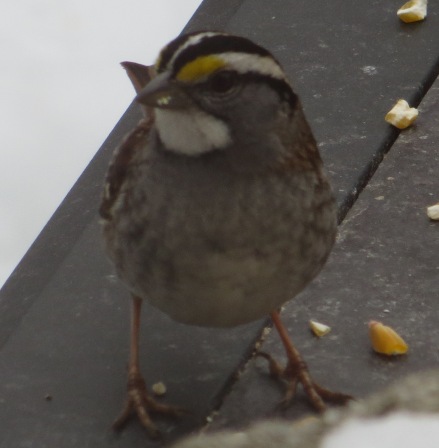
I have a hard time telling all the brownish little birds apart, but at least this white-throated sparrow (Zonotrichia albicollis) has a yellow mark to tell it apart from the others. This is the white-striped form (there's also a tan-striped form, whose throat patch and eye stripes are light brown). A visitor to our winter bird feeders. Doves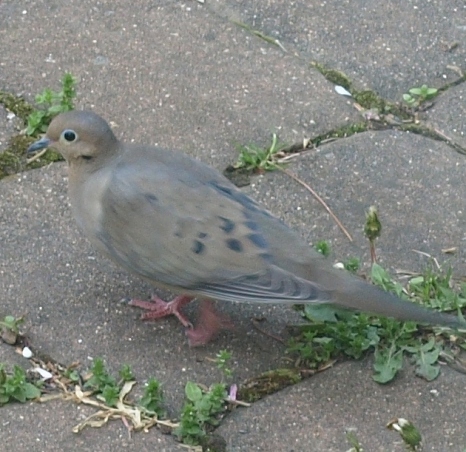
Mourning doves (Zenaida macroura) are not uncommon around our house. They are not overly skittish, so they can often be observed reasonably closely through our glass patio doors. They seem so gentle! Wrens
I believe the photos above show a Carolina wren (Thryothorus ludovicianus), identified by its slender downcurved beak, chunky body, and long often upturned tail, with reddish brown top feathers and buff bottom, and a prominent white eyebrow stripe. Probably quite common around our bird feeders (this one spotted in late April), but I'm not good yet at identifying birds by sight. This one was fun to watch – quite animated!
In June 2014, a pair of these little wrens decided to use a shelf in our garage where we store paint cans to build their nest. We tried to keep the garage doors open for them, so that they could feed their littluns, but in future years I think we'll try to encourage them to nest in a more conventional location. Still, it was entertaining to see them perform their choreographed sequence to get from outdoors over to that inside corner of the garage: fly up to the top of the overhead garage door, trip trip trip across the top of the door (making a racket) over to the bracket that holds the door, from there a quick flutter up to a supply shelf (see picture above), another quick airborn dash over to the end of the paint-can shelf, and then hopscotch across the full row of paint cans over to the nest. Quite a show, but they seemed more more afraid of a camera than they were of me, so I didn't get many pictures. Visitors to this page have left the following comments
I welcome comments about my web pages; feel free to use the form below to leave feedback about this particular page. For the benefit of other visitors to these pages, I will list any relevant comments you leave, and if appropriate, I will update my page to correct mis-information. Note that I discard any comments including html markups, so please submit your comment as plain text. If you have a comment about the website as a whole, please leave it in my guestbook. If you have a question that needs a personal response, please e-mail me.
Last modified:
June 05, 2022 |
|||||||||||||||||||||||||||||||||||||||
